Happy Birthday Jodee Fishing in Boat Funny
Reading Time: 9 minutes
Tarpon fishing in Florida is hands down one of the most exhilarating experiences you'll ever have in your angling career. The Tarpon population of the Sunshine State is impressive not just because of the number of fish, but also because of the sizes they reach.
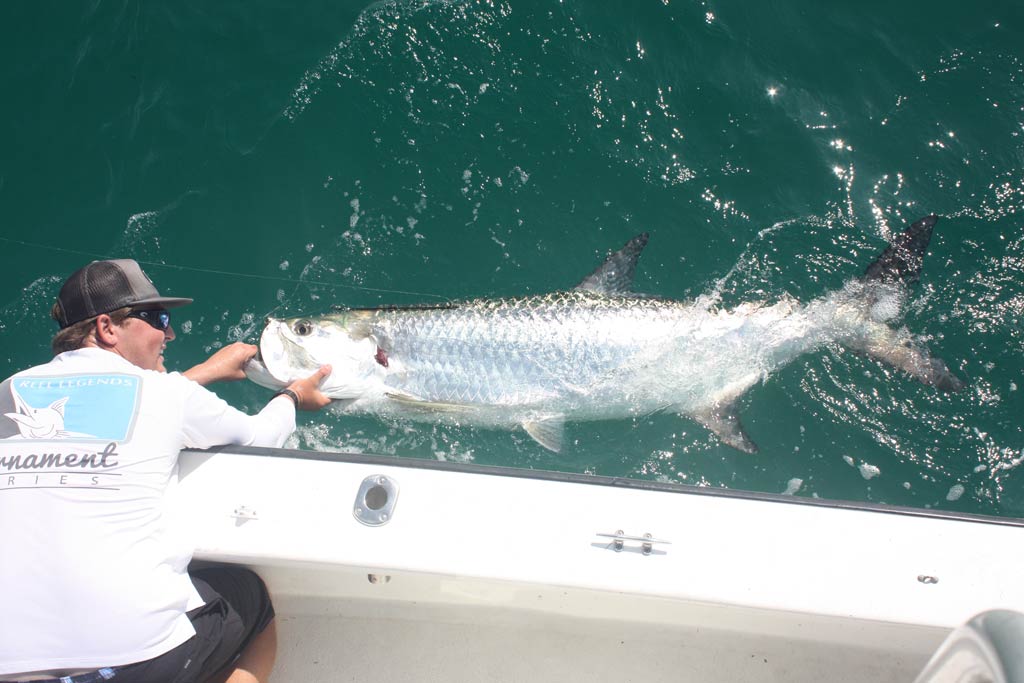
Also known as the "Silver King," this species is well known for its acrobatics on the end of a line. They're capable of jumping up to ten feet out of the water while rattling their gills like an angry diamondback snake. Tarpon's preferred water temperature is in the 74–88ºF range. This is why they're so numerous in Florida, the mild weather serves them perfectly. Read on to find out more about where and how to catch your trophy Tarpon.
How to Fish for Tarpon
Now that you know where to go, it's time to take a closer look at the best ways to entice and hook a Tarpon. If you're coming down for the first time, it's recommended to head out with an experienced charter captain, who can show you the ropes. There are different ways to go about it, so let's get started.
Natural and Live Bait
With natural bait, you'll get the best results during the ebb tide. Position yourself up-current and let your bait drift towards the fish. Double the end of your line at about 6 foot with a Bimini Twist and attach about 8′ of 100 lb mono with a swivel. Don't forget to use sharp hooks to get through the fish's bony mouth! That mouth is the reason why most fishermen land only about 1 in 5 takes.
Shrimps work very well as live bait. Hook a large shrimp under its horn on the head or thread it and freeline it. Avoid using floats because they make it difficult for the shrimp to swim naturally. Chumming with small, cut-up pieces helps. Your hook size should be 2/0–4/0. Crabs can be used instead of shrimp. Remove their claws and hook them bottom-up. Cast towards your target fish and let the bait slowly sink in front of it.

Fish like pilchards, mullet, and pinfish work great as live bait. Hook in the bait fish behind the anal fin or in front of the dorsal fin to ensure they stay alive for as long as possible. If you're anchored, hook the bait fish on the top lip and behind the head. Use a 6/0–10/0 hook depending on fish size with a large float 6–8 foot above the bait.
Live or dead fish can be used as bait on the flats, as well as large cut-up pieces of mullet. Just adjust the float to keep bait fish out of the grass. Cast often and in front of a single Tarpon. If you spot a pod, don't scare them away by casting into the pod. Instead, cast nearby where they'll notice but not get startled.
Artificial Lures
If you prefer using artificial lures, follow the same location, time, and tide guidelines as above. Work or troll your lure very slowly.
| Technique | Rod | Reel | Line |
|---|---|---|---|
| Spinning / plug casting (in open water) | 7′ | Spin or conventional | 250 yds of 12-15 lb mono or braided |
| Spinning / plug casting (around mangroves, bridges and piers) | 7′-8′ | Spin or conventional | 150 yds of 30 lb mono or braided |
| Inlet and Surf | 8′-9′ | Spin or 4/0 conventional | 300 yds of 30-50 lb mono or braided |
| Fly fishing | 9′-9.5′ 11-13 weight | High end reel with good drag | 300 yds 30 lb Dacron backing plus 100 yds 25 lb mono shock absorber |
Artificial lures are best used on flats. Use a lighter line and cast close enough to sighted fish for them to see your lure. Spinning lures and plugs should be retrieved slowly, letting the lure sink, then intermittently pulling the rod tip and reeling in the slack.
The lures that have proven to be effective include Gator spoons (3 ounces), Mirrolure 65M or 77M in colors 18 or 21, Rapala Magnum (in natural colors, for trolling), as well as red, black, or green plastic worms (Texas Rigged), worked close to the bottom.
When fishing canals and rivers are connected to saltwater, use small Rapalas, Rebels, and round-headed Crappie Jigs about 1/8 ounces. Make sure that if you are fishing with jigs or other artificial lures, the lure is not weighted so it hangs below the hook when the line or leader is held vertically.
Fly Fishing for Tarpon
If you're up for the ultimate challenge, then fly fishing for Tarpon is for you. Battling the King on the fly is a life-altering experience that requires patience, strength, and skill.
When you're choosing your tackle, remember that the color of your fly depends on the color of the bottom. Flies should be 3–5 inches long, with 2–2/0 hooks for juveniles, and up to 5/0 for large fish. Choose a streamer that has good contrast with the bottom of the fishery.
Orange, yellow, and red patterns are effective over sandy bottoms, while light gray, blue, and light green is better over dark grass. When Tarpon are sighted feeding on mullet, 7–9" white flies with dark stripes are good. Retrieve your fly slowly in 6–12-inch segments. Speed up and twitch more if a fish starts following to entice a hit.
When fly fishing canals and rivers, use a 5–7 wt rod, a 10 lb tippet with 20 lb 12" shock. Pair that a 1 lb 1–2" streamer in white or yellow – the Dahlberg Diver, Marabou streamer, muddler flies, and all-black streamers in dirty water. It's important to cast the fly right over a rising fish. Avoid fly fishing for Tarpon around bridges, because you might lose your catch on the surrounding obstacles.
How to Hook a Tarpon
Anglers frequently measure how good a fishing day it has been by counting how many Tarpon they "jumped", instead of just landed. This is because the fish's bony mouth makes it very difficult to set the hook well. Don't rely on hooks being sharp enough straight out of the box – sharpen them additionally. Another problem with hooking Tarpon is in their explosion-like strike – inexperienced anglers try to set the hook too soon.
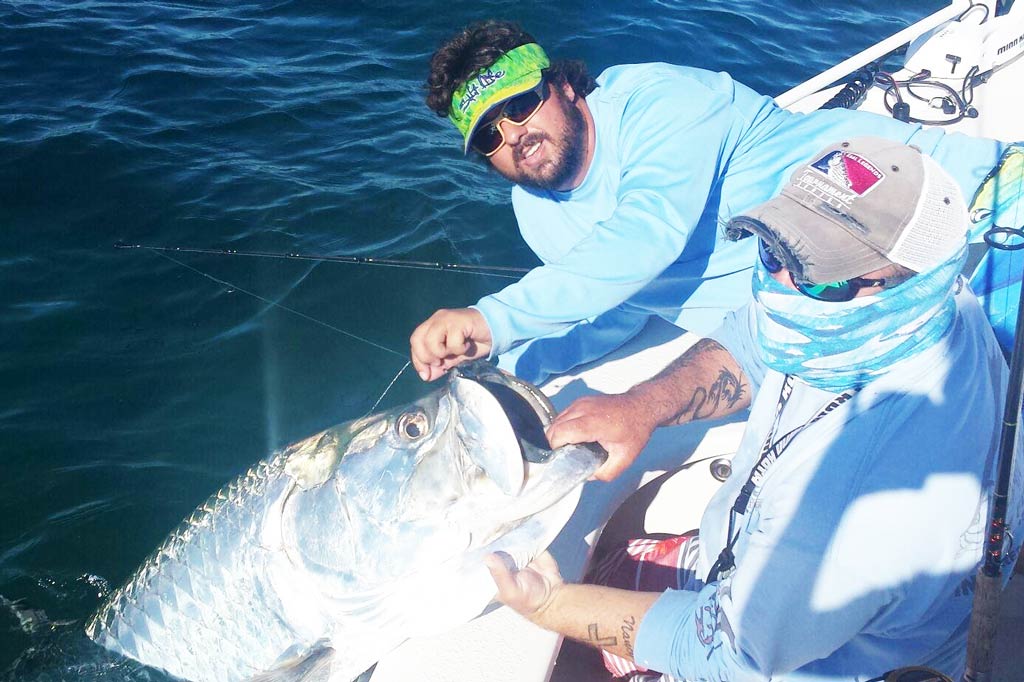
Don't worry! There are ways to avoid mistakes when hooking into this silvery gladiator. Let's cover natural bait first. When you feel the bite, take in the slack line, wait until you feel the weight, and strike hard two times. It might also be a good idea to wait an additional couple of seconds before setting the hook. Waiting will make sure the bait is solidly in the Tarpon's mouth. If you're using hard lures, strike as soon as you feel the fish's weight at the end of your line.
Fly fishermen sometimes strike as soon as they see the fish eating the fly, which is too soon. Set the hook only when you feel the Tarpon's weight. If your prey takes the fly while following it, stop stripping for a few moments to let the fly go deep into the fish's mouth, then strike. If the fish takes the fly while swimming towards you, you should set the hook several times in quick succession.
Not sure how to set your hook properly? Keep your rod tip close to the water, with the rod butt tightly secured against your belly. Quickly rotate your body, making the rod move sideways while the line strips in hard. In spite of all your efforts, when you're Tarpon fishing in Florida, be prepared for a good number of fish to shake free.
How to Land a Tarpon
Once you've solidly hooked a Tarpon, expect lots of high jumps, somersaults, and gill-rattling. As your fish is about to leap, "bow" (lower) your rod tip and push it towards the fish to give the line some slack. There is no holding a large Tarpon and no "horsing" it in, either. The drag on your reel will need help. Press the line against your rod with your fingers and create additional resistance for the pulling fish.
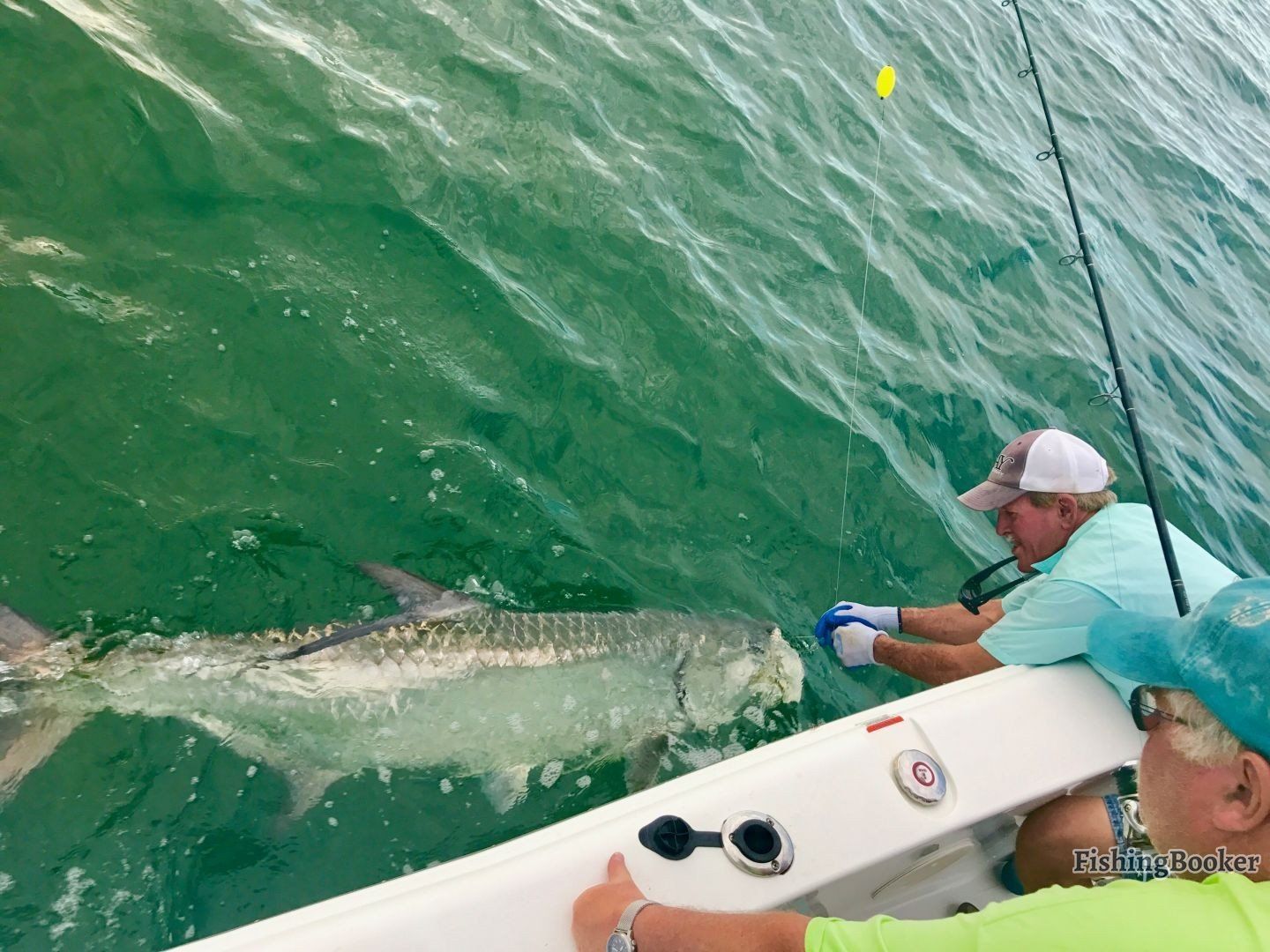
You'll know when your Tarpon gets tired because it usually rolls on its side. Use a short lip gaff and pass it through the fish's lower lip. The fish should be held while someone removes the hook or clips the leader as close to it as possible.
Be very careful with your Tarpon! They're large (and gentle, despite the size), so lifting them by the lip gaff can injure them severely. It's not recommended to get them out of the water, but rather remove the hook without getting the Tarpon into the boat.
After a fight, the fish often needs reviving. Hold it upright in the water, moving it back and forth to enhance water circulation through its gills.
Nearly all Tarpon are released, so some fishermen remove or flatten the hook barb to make the release less traumatic. While doing so will make the removal easier, you'll lose more fish.
Top Tarpon Fishing Spots in Florida
The Sunshine State is a Tarpon treasure trove, and there are many hotspots for you to choose from. Let's talk about the destinations an avid Silver King chaser simply can't miss.
- Upper Keys: There is a large population of Tarpon around the Channel Bridges, Tom's Harbor, Seven Mile Bridge, and Long Key. Also, look for them on the flats. Jack Bank (near Marathon) and Buchanan Bank (near Islamorada Key) are good places as well.
- Lower Keys: The best locations are Key West Harbor and Bahia Honda Bridge. The Marquesas Keys, since they're uninhabited and not connected to Key West by road, have Tarpon in great numbers if you can get to them. The waters surrounding the Bahia Honda Bridge are full of fish too.
- Boca Grande: Arguably, Boca Grande is one of the best-known Tarpon centrals in the world, and for good reason. The flats surrounding Homosassa Bay and the Crystal River are full of big Tarpon May through June. Be prepared for crowds though and hitting the water early to find your spot.
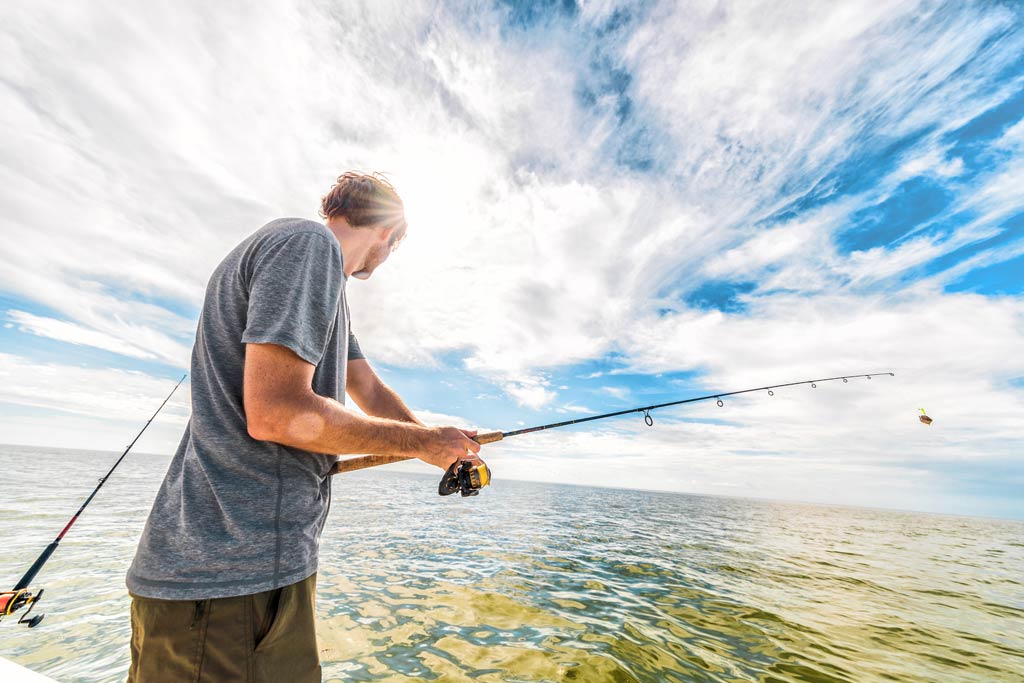
- The Everglades National Park and the Ten Thousand Islands: There's nothing better than pairing stunning nature with an even better bite. The Sandy Key and Rabbit Key Basins along with the canals at Lake Ingraham and river mouths of Lostman's and Harney rivers are brimming with Tarpon. The Turner River at Chokoloskee is another good hunting ground.
- Miami and the Atlantic Coast: Although found throughout Florida's Atlantic coast, ports and inlets south of Biscayne Bay offer the best Tarpon fishing. Government Cut (between Miami Beach and Fisher Island) and Port Everglades, in particular, have earned their name thanks to the fantastic Tarpon fishing from January to June.
- Tampa Bay: One of the best inshore fishing destinations in Florida, Tampa Bay hides excellent Tarpon in its clear waters. You'll find Silver King around the bay's mouth (Egmont Channel), as well as around Fort De Soto Park and John's Pass.
Best Time to go Tarpon Fishing in Florida
The rule of thumb is that spring and summer are the best time to go after Tarpon. Peak months vary depending on the area, but even if you don't make it then, you can find some Tarpon in Florida waters year-round.
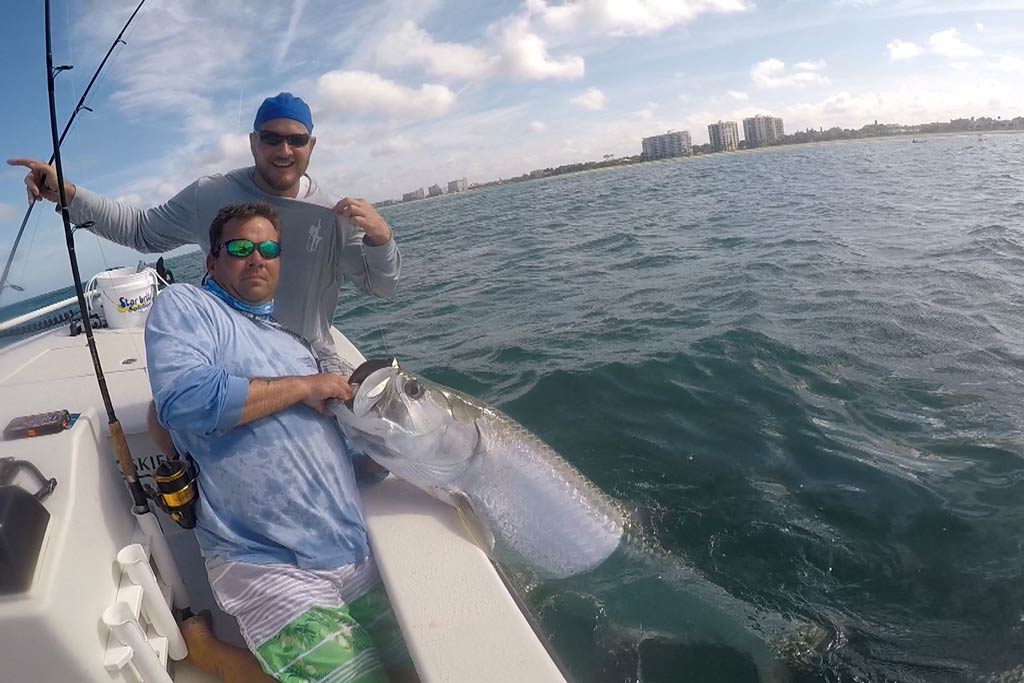
In the Upper and Middle Keys, Tarpon are always present, but to catch peak season, you should book a trip from mid-March to mid-July. During springtime, Tarpon are mostly on the Florida Bay side, but as the year progresses, they start moving to the Atlantic side.
If the Lower Keys are your destination, May through late July are the best months. In the mood for winter Tarpon fishing? Key West Harbor is full of feeding Tarpon from January through March.
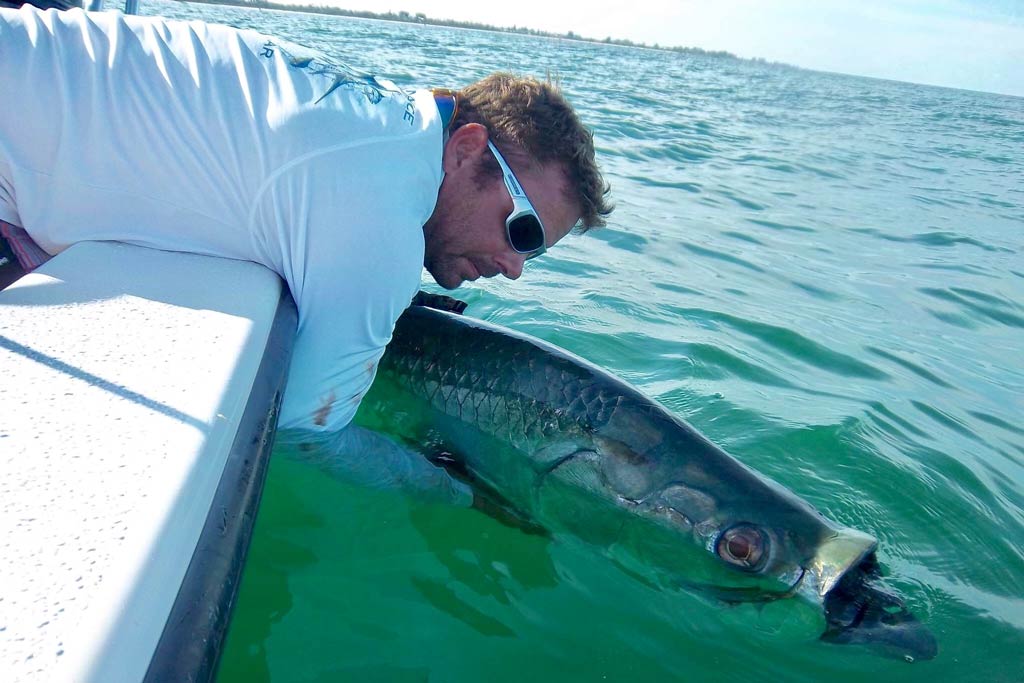
Around the Everglades National Park and the Ten Thousand Islands, fish are caught all year. The peak season lasts from March to July, and most fish are found during the receding tide.
Florida's West Coast from the Everglades to the Panhandle is famous for its first-class Tarpon action. The best months are May and June when people from all over the world come down to land a trophy. Apalachicola Bay is another good spot throughout the entire summer.
The Atlantic Coast of Florida, especially south of Biscayne Bay, boasts incredible Tarpon fishing from January through June.
Tarpon Fishing Regulations
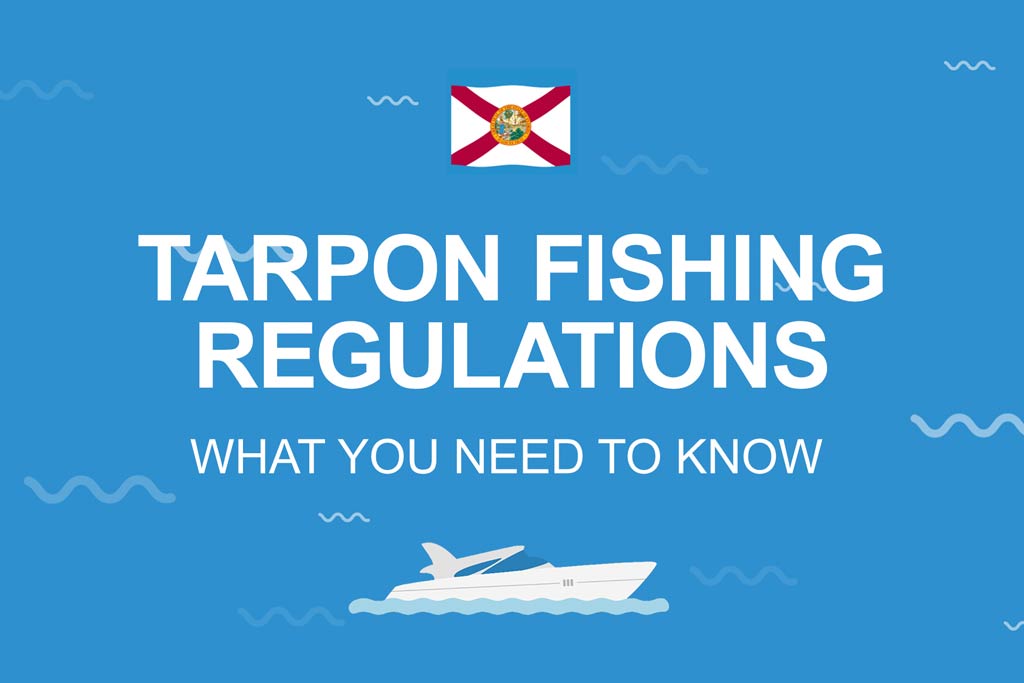
Before you start exploring Florida's prolific waters and come face to gills with the biggest Tarpon of your life, it's important to be aware of the fishing regulations.
Tarpon are catch and release only in the state of Florida. Retaining the fish is only permitted if you are pursuing an IGFA world record and have purchased a Tarpon tag. The cost is around $50 and you're limited to one tag per year, per person. Also, Tarpon fishing gear is limited to hook and line only. But don't worry, now that you're familiar with the rules, you're in for a world of fun.
Tarpon Fishing in Florida: Your Catch of a Lifetime Awaits!
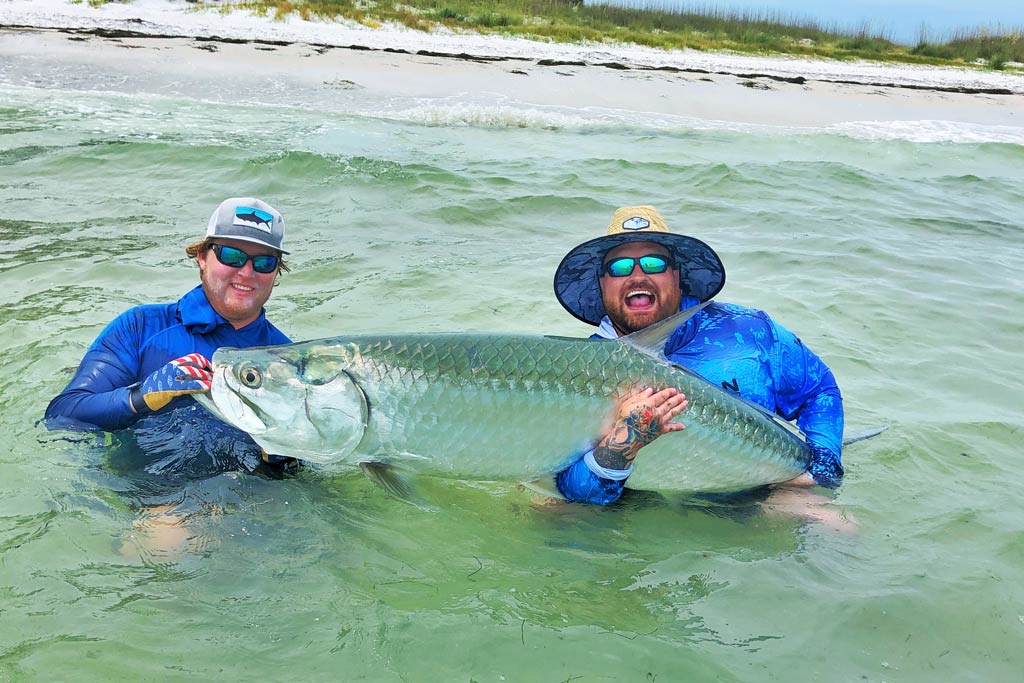
For experienced fishermen, a monster Tarpon is a bucket-list catch, and how could it not be? These gorgeous fish are inshore heavyweight champions and they'll make you work hard for every inch of the line. But the thrill and the sense of accomplishment you get, not to mention the prestigious catch, are well worth the effort.
Ready to put your angling abilities to the test? Then Tarpon fishing in Florida is your next adventure!
Have you fished for Tarpon in Florida before? How big was your catch? What bait/lure did you use? Got some other tips you'd like to share? Let us know in the comments below!
Source: https://fishingbooker.com/blog/tarpon-fishing-in-florida/